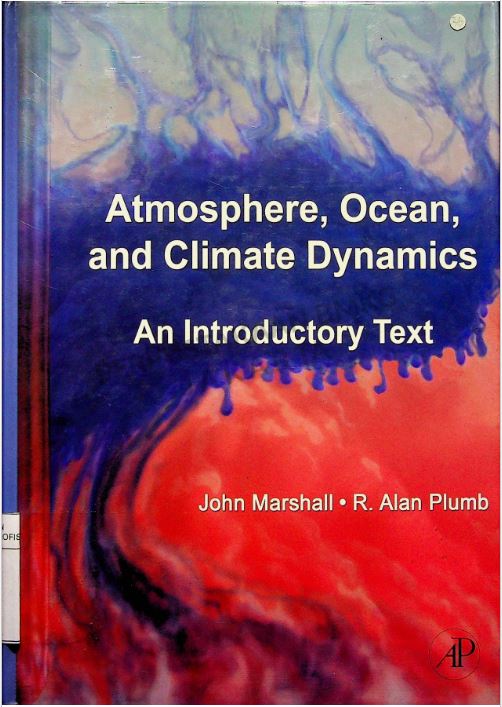This is an introductory text on the circulation of the atmosphere and ocean, with an emphasis on global scales. It has been written for undergraduate students who have no prior knowledge of meteorology and oceanography or training in fluid mechanics. We believe that the text will also be of use to beginning graduate students in the field of atmospheric, oceanic, and climate science. By the end of the book we hope that readers will have a good grasp of what the atmosphere and ocean look like on the large scale, and, through application of the laws of mechanics and thermodynamics, why they look like they do. We will also place our observations and understanding of the present climate in the context of how climate has evolved and changed over Earth's history.The book is roughly divided in to three equal parts. The first third deals exclusively with the atmosphere (Chapters 1 to 5), the last third with the ocean and its role in climate (Chapters 9 to 12). Sandwiched in between we develop the necessary fluid dynamical background (Chapter 6 and 7). Our discussion of the general circulation of the atmosphere (Chapter 8), follows the dynamicalchapters. The text can be used in a number of ways. It has been written so that those interested primarily in the atmosphere might focus on Chapters 1 to 8. Those interested in the ocean can begin at Chapter 9, referring back as necessary to the dynamical Chapters 6 and 7. It is our hope, however, that many will be interested in learning about both fluids. Indeed, one of the joys of working on this text—and using it as background material for undergraduate courses taught at the Massachusetts Institute of Technology (MIT)—has been our attempt to discuss the circulation of the atmosphere and ocean in a single framework and in the same spirit.In our writing we have been led by observations rather than theory. We have not written a book about fluid dynamics illustrated by atmospheric and oceanic phenomena. Rather we hope that the observations take the lead, and theory is introduced when it is needed. Advanced dynamical ideas are only used if we deem it essential to bring order to the observations. We have also chosen not to unnecessarily formalize our discussion. Yet, as far as is possible, we have offered rigorous physical discussions expressed in mathematical form: we build (nearly) everything up from first principles, our explanations of the observations are guided by theory, and these guiding principles are, we hope, clearly espoused.- The majority of the observations described and interpreted here are available electronically via the companion Web site, http://books.elsevier.com/companions/9780125586917. We make much use of the remarkable database and web-browsing facilities developed at the Lamont Doherty Earth Observatory of Columbia University. Thus the rawdata presented by figures on the pages of the book can be accessed and manipulated over the web, as described in Section A.5. One particularly enjoyable aspect of the courses from which this book sprang has been the numerous laboratory experiments carried out in lectures as demonstrations, or studied in more detail in undergraduate laboratory courses. We hope that some of this flavor comes through on the written page. We have attempted to weave the experiments into the body of the text so that, in the spirit of the best musicals, the 'song and dance routines' seem natural rather than forced. The experiments we chose to describe are simple and informative, and for the most part do not require sophisticated apparatus. Video loops of the experiments can be viewed over the Web, but there is no real substitute for carrying them out oneself. . We encourage you to try. Details of the equipment required to carry out the experiments, including the necessary rotating turntables, can be found in Section A.4.Before getting on to the meat of our account, we now make some introductory remarks about the nature of the problems we are concerned with.
5
ATMOSPHERE, OCEAN, AND CLIMATE DYNAMICS: AN INTRODUCTORY TEXT
John Marshall and R. Alan Plumb
Penerbit :
Elsevier Inc. All rights reserved.
Tahun :
2008
Buku Text
Oseanografi Laut Iklim atmosfer Ocean
-
No Scan98
-
No Klasifikasi551.5'246
-
ISBN-
-
ISSN-
-
No Registrasi011A/VI/2009
-
Lokasi Terbit-
-
Jumlah Hal33
-
Label551.5'246Mar a
-
Versi DigitalYA
-
Versi FisikYA
-
Lokasi Rak Buku Fisik01/A/01
-
Jumlah Exemplar Fisik Tersedia1






